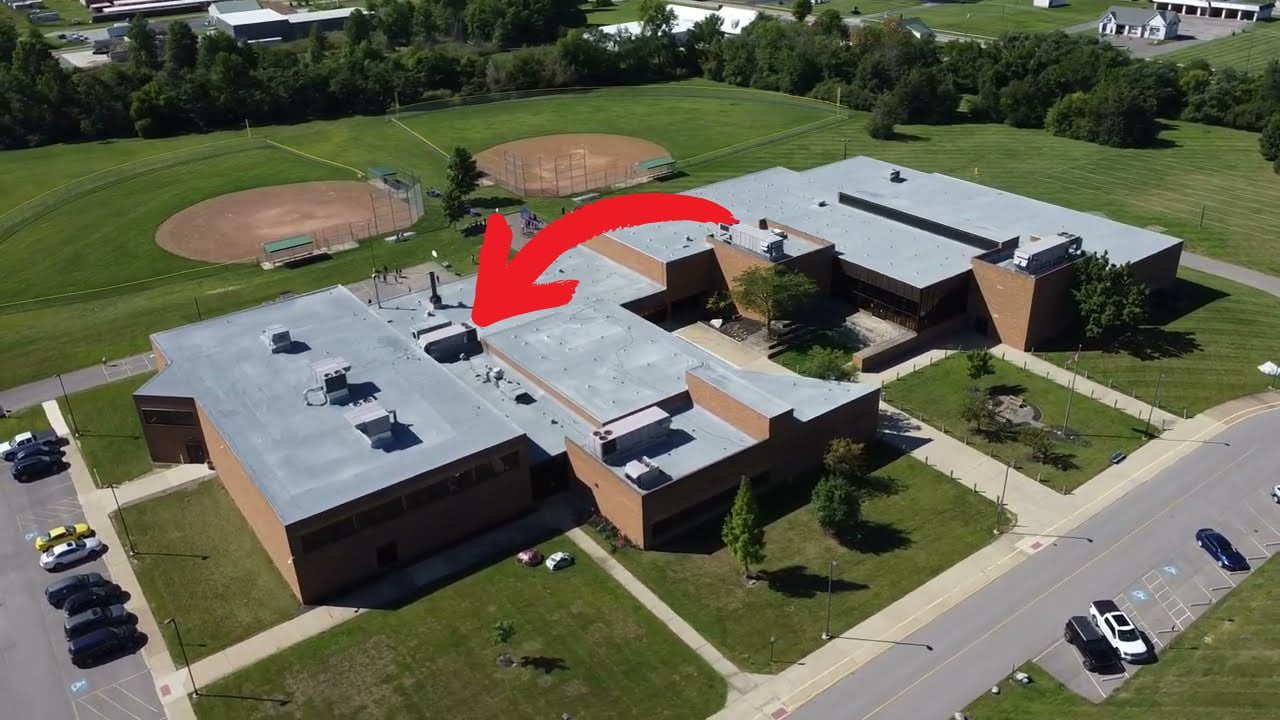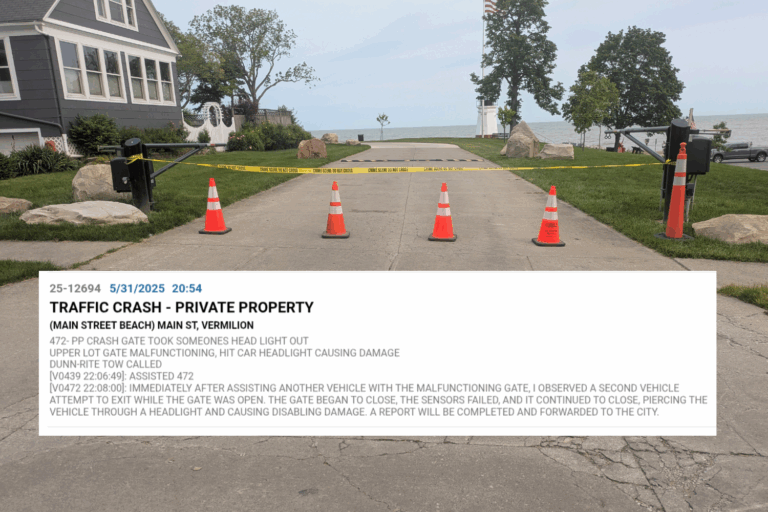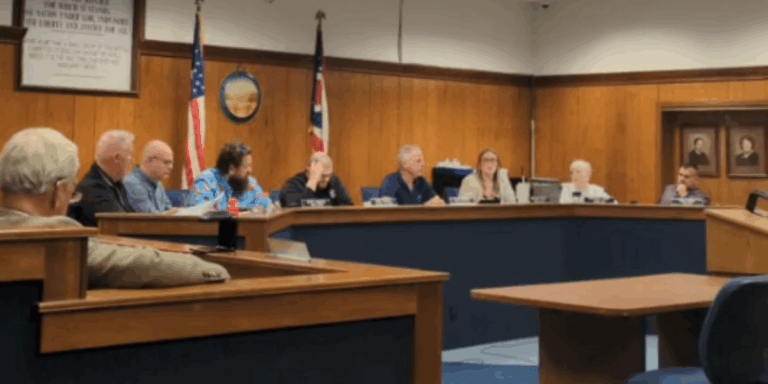
Sailorway Middle School Aerial View
Vermilion’s $47 Million School Bond Levy: Necessary Investment or Excessive Burden?
The Vermilion Local School District has proposed a $47 million bond levy to address critical renovations for its aging school facilities. The bond, if approved by voters, would fund extensive upgrades to Vermilion High School, Sailorway Middle School, and several other district properties. While supporters of the levy argue it is essential for maintaining safe and effective learning environments, many Vermilion residents are raising concerns about the additional financial burden it would place on taxpayers.
This investigative report examines the levy’s potential impact on both the school district and the community, focusing on the tension between the need for facility improvements and the financial strain on local residents.
The Case for Renovations
The need for facility upgrades across the district is undeniable. Vermilion High School, constructed in 1968, and Vermilion Middle School, built in 1976, have received minimal updates over the years. During a recent school board meeting, officials outlined extensive issues with the buildings, including failing roofs, outdated HVAC systems, accessibility concerns, and inadequate science labs.
The renovation plan proposes addressing these problems comprehensively. For Vermilion High School, the scope of work includes replacing six rooftop HVAC units, repairing and replacing the roof, updating restrooms, modernizing science labs, and improving technology infrastructure. Similar upgrades are planned for Vermilion Middle School, along with replacing an aging elevator and addressing worn sidewalks and parking areas.
District officials stress that these improvements are not cosmetic but essential for maintaining safe, functional, and modern educational spaces. The upgrades are also designed to meet today’s educational standards, with a focus on providing students with the tools and resources needed to succeed in a competitive academic environment.
The $47 Million Price Tag
The total cost of the proposed renovations is estimated at just under $50 million. This figure includes design, construction, and market contingencies, as well as soft costs for plan approvals, architect fees, and other administrative expenses.
A key point of concern is the scale of the investment. Some residents question whether spending $47 million on renovations for older buildings is the best use of funds, particularly when the cost of constructing entirely new schools is estimated to range from $50 million to $80 million. Vermilion Elementary School, completed approximately a decade ago, was built for $10 million—raising questions about the comparative value of renovation versus new construction.
The Financial Burden on Residents
The proposed levy would add to the financial pressures already felt by Vermilion citizens. Property values in both Lorain and Erie counties have risen, leading to higher property taxes for many residents. Inflation has further compounded these challenges, with the cost of goods and services climbing steadily in recent years.
Adding to this is the history of financial mismanagement in Vermilion’s water department. Poor decisions and mounting debt in this area have led to increased utility rates for residents. For many, the idea of taking on additional taxes for the school bond levy feels like an overwhelming ask.
For fixed-income households, such as retirees, the potential tax increase could be particularly devastating. These residents are already stretched thin by rising costs and worry that the levy will push them to a breaking point. This has created a significant divide in the community, with some prioritizing educational improvements and others focusing on economic survival.
Community Support and Skepticism
While there is no denying the need for school improvements, the community remains divided over how to address them. In a recent example of Vermilion’s cautious approach to taxation, voters approved a renewal levy for the school district that did not increase taxes. This renewal provided critical funding to maintain current programs and services but highlighted residents’ reluctance to commit to higher financial obligations.
The proposed bond levy, however, is a much larger financial undertaking. Supporters argue that failing to pass the levy could lead to even higher costs in the future as facilities continue to deteriorate. Opponents, on the other hand, question whether the district has fully explored alternative solutions, such as phased renovations or additional state funding.
Vermilion Daily Poll
A recent poll conducted by Vermilion Daily highlights the divided opinions within the community regarding the proposed $47 million bond levy. Out of 182 total votes, 52% (96 votes) were against the levy, indicating strong resistance to the additional tax burden. Meanwhile, 40% (73 votes) supported the levy, showing a willingness to fund the much-needed school renovations. Another 7% (13 votes) selected “Not Sure,” reflecting uncertainty among residents who may feel torn between the need for upgraded facilities and the financial strain of higher taxes. The results underscore the tension in Vermilion, where many residents acknowledge the importance of modernizing aging schools but remain hesitant to approve a levy that could exacerbate rising property taxes and living costs.

Transparency and Accountability
A significant concern for many Vermilion residents is the issue of transparency. Past financial mismanagement in other areas of local government has eroded public trust, making voters wary of large-scale spending initiatives. To gain community support, the school district must clearly communicate how the bond funds will be used and provide assurances that the money will be managed responsibly.
Copies of the renovation plan and cost breakdown have been made available to the public, but questions remain about the scope and priorities of the project. For instance, some residents have expressed concerns about spending on athletic facilities, such as tennis court renovations, while core educational needs like science labs and classroom technology remain underfunded.
Balancing Needs and Affordability
The $47 million bond levy represents a difficult balancing act for Vermilion citizens. On one hand, the need for school renovations is undeniable, and failing to address these issues could harm the district’s ability to provide a quality education. Modern, safe, and functional schools benefit not only students and staff but also the broader community by attracting families and increasing property values.
On the other hand, the financial burden on residents is a pressing concern. Rising taxes, inflation, and utility costs have created a challenging economic environment, particularly for vulnerable populations. For many, the question is not whether the renovations are necessary but whether they are affordable.
Conclusion
As Vermilion voters consider the $47 million bond levy, they are faced with a complex decision. The proposed renovations would address critical issues in aging school facilities, ensuring that students have access to safe and modern learning environments. However, the financial strain of the levy on an already burdened community raises serious concerns.

Ultimately, the outcome of the vote will depend on whether residents believe the long-term benefits of the renovations outweigh the immediate costs. In a town already grappling with economic challenges, the decision is about more than just education—it is about balancing progress with affordability.






Is there an estimate of the mils to be levied?
This reporting is well stated. One might question why the normal physical deteriorating of HVAC units and roofs aren’t on a scheduled maintenance and upgrade schedule. Given the increase in housing development in our City and the reality of increasing our school population, a forward projection of that affect needs to be assessed. School levies are never a popular endeavor. As outlined in your article. There should be a comprehensive and situational examination done that provides for a number of options with financial proformas for each. It seems that Vermilion is always facing a last minute “dire” or “emergency” scare. Time to start better understanding and accounting for the reality of normal infrastructure updates along with forward planning to meet the needs of expected normal growth.
This reeks of poor management. Maybe we need fewer extras less assistants and coaches.
No one ever asked me on job interview what my bowling score was or how was my forehand in tennis.